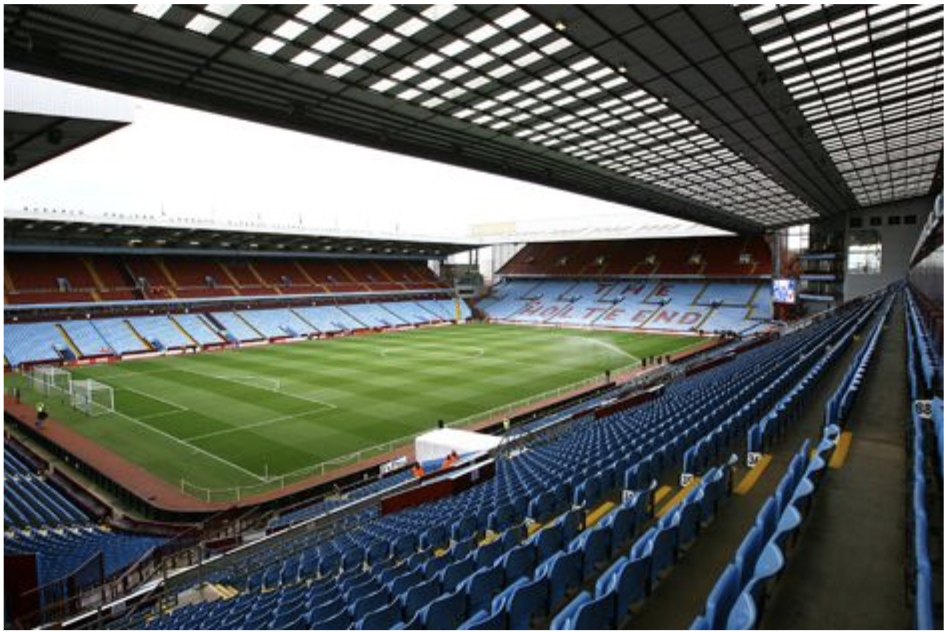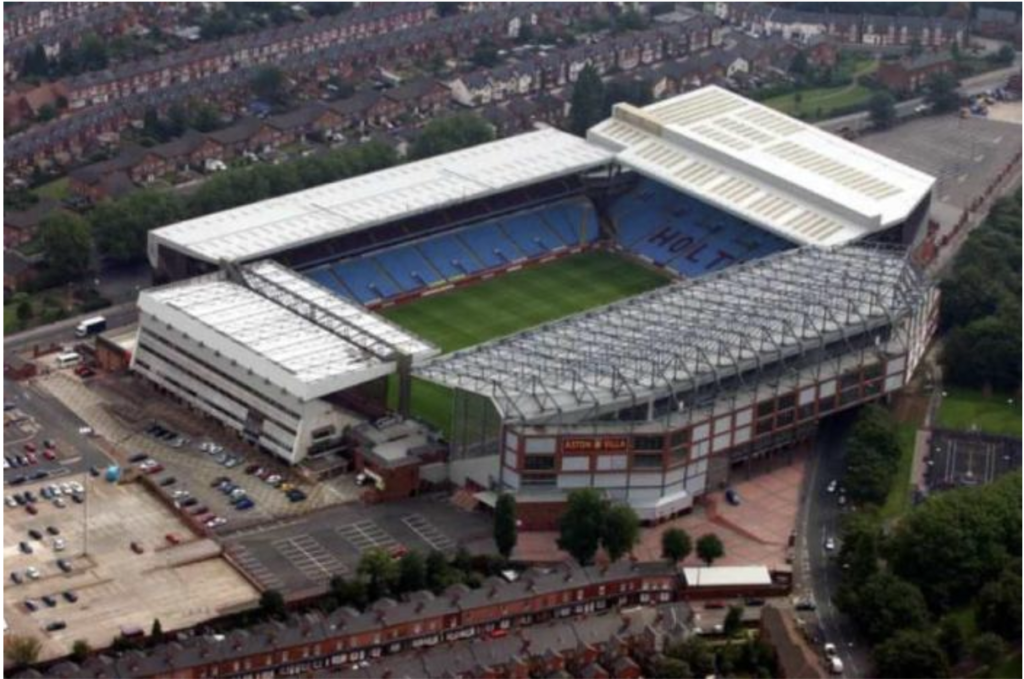An iconic landmark of English football history is Villa Park Stadium, which is situated in Aston, Birmingham. This location has long been home to Aston Villa and has seen many incredible moments and championship games. Now let’s play cakhiatv. Discover the mecca of villans, Villa Park, and its history, architecture, and significant occasions.
 Villa Park stands out for its large stands and once had a cycling track
Villa Park stands out for its large stands and once had a cycling track
The stadium known as Villa Park was established in 1897 by Frederick Rinder, the Aston Villa chairman. The stadium was one of the biggest in England when it was initially opened, holding 40,000 spectators at its first event.
Through many stages of development, Villa Park has been expanded and redesigned many times. Most prominent is the construction of large stands such as Trinity Road Stand and Holte End, increasing the total capacity to 42,749 seats. A unique feature of Villa Park in the past was the bicycle track surrounding the field, but it has since been replaced by all-seat stands.
Unique architecture and passionate atmosphere
Villa Park bears the architectural imprint of Archibald Leitch, the famous Scottish stadium designer. The stadium has 4 main stands with distinct styles, creating an impressive overall architecture. The highlight is the Holte End stand with its characteristic curved roof, a capacity of more than 31,000 seats and is nicknamed “Holte Fortress” because of the enthusiasm of the fans.
Villa Park is nicknamed “Holte Fortress” because of the resounding singing from the Holte End stands. This place is always vibrant with enthusiastic cheers, creating a passionate atmosphere and inspiring the players to compete. Vibrant support songs such as “Holte Enders We Are”, “Go Aston Villa” and “The Lion Sleeps Tonight” have become symbols of the spirit and pride of Aston Villa fans.
The legendary stadium is associated with historical moments
 KAudience record reached 68,000 people
KAudience record reached 68,000 people
Since its inauguration in 1897, Villa Park has been the home ground of the Aston Villa club. The stadium has witnessed many ups and downs with the team, from dazzling glory to bitter defeats. Villa Park is the place that marks beautiful goals, resounding victories and even tragic moments in Aston Villa’s history.
On the land of Villa Park, countless memorable matches took place, contributing to the history of English football. The highlight was the 1957 FA Cup semi-final between Aston Villa and Manchester United, attracting more than 68,000 spectators to the stadium – a record number up to that time.
More than a stadium – Symbol of football culture
Villa Park Stadium is an important cultural heritage of the city of Birmingham and England. This place preserves long-standing historical values, associated with the development of English football. Villa Park is a symbol of the passion for football, sportsmanship and love of homeland of the people of Birmingham.
Villa Park attracts tourists from all over the world to visit and experience the passionate football atmosphere. This place is also an ideal destination for history and architecture lovers.
Villa Park has a vast influence on English and world football. The stadium is the birthplace of many football legends, a source of inspiration for generations of young players and the pride of Aston Villa fans.
The future of Villa Park
 DIt is expected to upgrade capacity to 50,065 seats
DIt is expected to upgrade capacity to 50,065 seats
Aston Villa is planning to renovate and upgrade Villa Park in the future, with the goal of increasing capacity to 50,065 seats. The plan includes the construction of a modern shopping and entertainment complex, promising to turn Villa Park into an attractive destination for fans and visitors.
In addition to top football matches, Villa Park is also a venue for many other sports and entertainment events. This is where dramatic bicycle races, exciting boxing matches and explosive concerts took place. Villa Park is always vibrant with a bustling atmosphere and impressive performances, attracting a large audience to participate.
Conclude: Villa Park Stadium is not only a place for football matches but also a symbol of history, culture and pride of the people of Birmingham and England. This place has witnessed many ups and downs with Aston Villa, is an attractive destination for tourists and a source of inspiration for football lovers. Visit now ca khia tv Update the latest news about football and sports!








